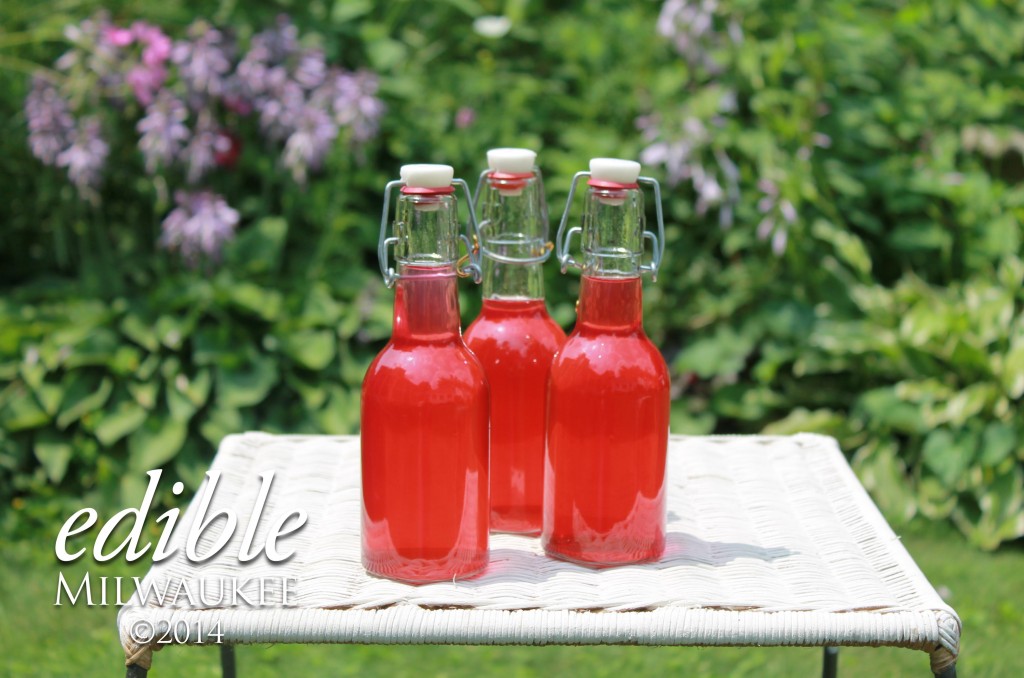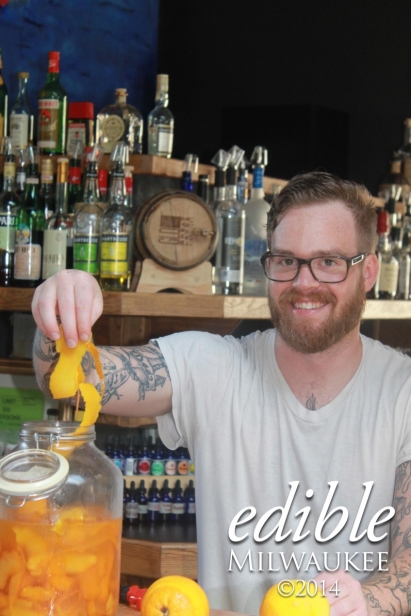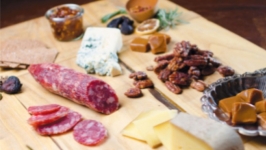Homemade Syrups, Infusions Making Comeback
Purity, flavor of homemade syrups, infusions making comeback
TV dinners and processed cheese food are to cuisine what sweet & sour mix is to mixology. Generally called “sour mix” behind the bar, it is mass-produced and is about as unnatural as can be. For decades until fairly recently, convenience trumped quality and artificiality became the standard. The American palate was held hostage by colors and flavors produced by the gastronomy-industrial complex.
Just when it looked like that banal nightmare was never going to end, a bartender named Dale DeGroff at New York’s Rainbow Room in the 1980s read an antique bartending book from 1862. “The Bon-Vivant’s Companion,” by Jerry Thomas, inspired DeGroff to return to the classic ratios and formulas, juicing his own fruit and making drinks the way the old masters had. The result? Revolution. Attention to basic details made such a difference in the quality of DeGroff’s mixology that he is generally considered to be the craft cocktail movement’s founding father (and he’s also a James Beard Award winner). American bartenders picked up his torch, armed with the ratios, techniques and ingredients of bartending’s Golden Age.
The seeds of this movement could hardly have fallen onto more fertile soil than our own. In Wisconsin, pride in craftsmanship never really died, and slow food remains a way of life. As with dining, our drinks improve by incorporating fresh herbs and produce. Perhaps the biggest single improvement in the quality of cocktails can be achieved by abandoning that abomination of convenience, and making sour mix from scratch. Housemade sour mix is as easy as combining approximately equal proportions of sugar with the juice of lemons and limes, and quantities can be easily scaled for use at home or behind the busiest bar.
However, Wisconsin is not known for citrus production (although The Hamilton did successfully produce two limes that achieved cult status). Another way to incorporate fresh ingredients is to cultivate a small herb garden. Mint is the most common, appearing on the patios of bars at The Iron Horse and Great Lakes Distillery. Though a bar garden might start as a few plants in a sunny spot out back for quality, cost savings, and convenience, imaginative bartenders are finding ways to use more exotic ingredients. Tripp Duval, bartender at The Hamilton, showed off the jalapeños, lemongrass and cilantro that grow in the sunshine on their patio garden. Artful use of these plants can replace the artificially-flavored spirits produced by the major factory distillers—though it should be noted that Milwaukee’s own Great Lakes Distillery (GLD) uses real lemons, honey, maple syrup and botanicals in the spirits they produce.
Pride in craftsmanship never really died, and slow food remains a way of life. As with dining, our drinks improve by incorporating fresh herbs and produce.
The most versatile way to bring real food into cocktail ingredients is also its humblest. Whether you want to make shrubs, tonics, sodas, liqueurs or cordials, they all start with syrup.
The basis for this category is simple syrup, which is roughly equal parts granulated sugar and water. Making flavored syrups is nearly as easy, and their variety is as limitless as your imagination. There are two basic methods: hot and cold. If you are starting with something very dry, it is customary to simmer it in water to draw the flavors out. Matt Tunnell, assistant manager of GLD’s tasting room, likens this approach to making tea.
I spoke to Jeff Cleveland, manager of Bryant’s Cocktail Lounge, about his rhubarb syrup. Rhubarb has very little of its own water, so it’s necessary to add some. Simmer equal parts cubed rhubarb and water for about 20 minutes, cool slightly and add sugar. How much sugar you add depends on the sweetness of your base ingredient, so a little extra sugar is needed to balance the tartness of rhubarb.
However, if you are starting with an ingredient that has a higher liquid content, you can get a truer, brighter flavor without cooking. GLD’s Tunnell has been concocting all manner of house-made ingredients for years, and his advice is simple: just chop your fruit and put it in a jar with your sugar. He hints at the science behind the technique, “[T]he sugar will draw the liquid out and get the flavor, and then you can strain the solids out.” He will then pour a little vodka over the solids, to pull through even more flavor. The cold-process approach also works when starting with frozen fruit, making it possible to produce some fruit syrups year-round.
Once you’ve mastered syrups, there are many ways they can be used to expand your cocktail program at work or at home. To make sodas, add your flavored syrup to carbonated water. Make a 2:1 ratio of syrup to cider- or rice vinegar to make an easy-drinking shrub; early American bartenders used this method to preserve summer fruits for winter use. Making your own fruit cordials is as simple as adding your syrup to a complementary spirit. The Hamilton’s Duval makes a beautiful orange liqueur in large batches, using orange peels that might otherwise be discarded.
Perhaps, however, you wish to add flavors to your cocktails, but not the sweetness of sugar. Infusing alcohol can be as easy as soaking the flavorful ingredient in your choice of alcohol. Ellie Harbeck of the Iron Horse Hotel oversees a cocktail program that takes full advantage of this technique.
Timing and tasting are the keys to your success, says Harbeck. In simple infusions, all the ingredients can be added at once, but in more complex blends, flavor must be staggered so that one doesn’t dominate the others.
The Hotel’s summer cocktail menu featured a honeydew-habanero tequila infusion. Harbeck explains, “[W]e let the honeydew sit for a few days, then we put the habanero in after—if (the peppers) sit for much longer, you’d be needing a drink with your drink!”
All this emphasis on freshness and quality might seem intimidating in its modernity, but in truth it represents a return to the practices of bartending’s Golden Age. Today’s professionals and passionate amateurs honor the life’s work of men like Jerry Thomas when we take up the torch of craft bartending.
You, too, can follow in this tradition. Growing and making your own ingredients improves the quality of the cocktails we drink, and meaningfully connects us to our heritage.







